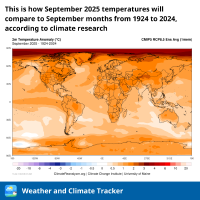Meteorological vs Astronomical Summer

Meteorological summer and astronomical summer are two different ways of defining the summer season.
Meteorological summer is defined by the three warmest months of the year in a particular region, typically June, July, and August in the northern hemisphere and December, January, and February in the southern hemisphere. This definition is based on the annual temperature cycle and is primarily used by meteorologists and climatologists for weather forecasting and climate analysis.
Astronomical summer, on the other hand, is defined by the position of the Earth in its orbit around the sun. It is the period of time between the summer solstice, which occurs around June 20-22 in the northern hemisphere and December 20-23 in the southern hemisphere, and the autumnal equinox, which occurs around September 22-23 in the northern hemisphere and March 20-21 in the southern hemisphere. During astronomical summer, the Earth’s northern hemisphere is tilted toward the sun, resulting in longer days and shorter nights.
While meteorological summer is based on temperature patterns, astronomical summer is based on the position of the Earth in its orbit around the sun. Both definitions are useful in different contexts, with meteorological summer being more commonly used for scientific and practical purposes such as agriculture, tourism, and energy consumption, while astronomical summer is more relevant for astronomical observations and cultural traditions.
Both definitions are useful in different contexts, with meteorological summer being more commonly used for scientific and practical purposes such as agriculture, tourism, and energy consumption, while astronomical summer is more relevant for astronomical observations and cultural traditions.
This post is also available in: Spanish, Russian, Belarusian, Portuguese, French, German, Italian, Turkish.



